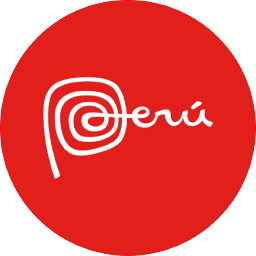
Jesuit Missions, 3 days from Santa cruz
Much more than just churches! Beautiful environment, friendly people, a completely different pace of life!
The area of the missions is rich in culture and has a special history. The whole region breaths a special atmosphere, life babbles on quietly. You won’t forget a visit to this area. From two days on you can visit the missions.
Other than in Argentina or Paraguay, the churches of the Jesuit Missions in Bolivia are still intact. They are renovated under the architect Hans Roth and they even were declared UNESCO world heritage.
The area of the missions used to be inhabited by tribes that lived as nomads. The Jesuits first established an autonomous religious state in Paraguay and spread from there to -amongst others- the missions in Bolivia. Here they established settlements with two or three priests at the head of each settlement and each settlement got its own army that was reputedly the best trained army of the continent. They protected the area against the Portuguese in Brazil and the Spaniards on the other side.
The Indians profited from living in a settlement while they could escape in this way from the encomienda system (according to what system they were pressed to work in exchange for protection) and slavery.
The Spaniards began to realize that the Jesuits became more and more powerful and in 1767 the missions were dissolute and the Jesuits expelled from the continent.
After the Spaniards found out that the settlements weren’t profitable they left, soon followed by the Indians. What remained were ground for agriculture and the fantastic churches that can still be admired.
The Jesuits did not only bring the Indians their religion, but also their culture; they were taught to make and play musical instruments such as harps and violins and to process wood for other purposes.
Once every two years there is a baroque concert in the churches of the missions, which attracts worldwide interest.
Musical instruments and ornaments are still manufactured by hand in this region.

Jesuit Missions, 3 days
Day 1 Your guide will pick you up at your hotel in Sa. Cruz for the journey through the beautiful green lowlands.
After we leave the city behind us, the landscape changes. You can see Mennonites riding in their covered wagons in this region where they have their colonies. From San Ramón you will enjoy the slopes in the landscape. Your guide can point you to palm trees that are suffocated by bibosi trees. In the whole area you will see agriculture and cattle.
San Javier is known for its dairy products, cheese and yogurt. If you pay attention you can probably see some birds of prey and toucans.
San Javier was founded on December 31, 1691 by two Jesuits missionaries. It was the first mission in the Chiquitania. The missionaries had been instructed to find a route between Asunción and Santa Cruz. San Javier was chosen as a stop between both places and it was the capital of the Jesuit Missions for almost 90 years.
We will visit the church and the museum. The paintings of the church have different colours than the churches in the other missions because local natural dyes were used.
After lunch it is still an hour’s drive to Concepción. Along the way we will pass a collection of huge stones dating from the ice age, las Piedras de Paquió.
There are many different types of orchids in the Concepción area.
Concepción was founded in 1699. The Jesuits lived here until they were expelled by the Spaniards in 1767 and fled into the woods.
We will visit the church. Dinner and stay overnight are in Concepción.

On the 2nd day we will visit two museums, one of which is located in the former home of Hugo Banzer, ex-president (1997-2001) and dictator. Then we leave for the small mission of Sa. Ana.
The ride is beautiful, you see grasslands and trees interspersed by ponds. You can see many species of birds and other animals. In the small hamlets you can see the local population doing their daily activities.
The roads along the Plaza of Sa. Ana are unpaved and on the square stand beautiful Toborochi trees. Your guide can tell you the legend that explains how these trees have come to their round shape.
The mission of Sa. Ana was founded in 1755. Wooden crosses still mark the entrance to the town. The church was only built after the Jesuits had been expelled from the country.
Then we will travel the last part of our journey for today, to San Ignacio near the Brazilian border. San Ignacio is the largest city of the Jesuit Missions. It is pretty lively. The nearby Guapomó lake is a wonderful place for a walk. The coffee factory of the town is usually open to visitors.
The mission of San Ignacio de Velasco was founded in 1748. We will visit the church, which is a modern reconstruction of the original church. Attached to it is a tower from the 1950s, a remnant of a second church that was taken down and replaced by a replica. At the crossroads on the outside of the central Plaza there are large wooden crosses.
We will have dinner and spend the night in San Ignacio de Velasco.
On day 3 we will return to Sa. Cruz.

Included:
- Private transport;
- Spanish-, German- or English speaking guide, depending on availability;
- Entrance fees;
- Meals from lunch on the 1st day up to and including lunch on the 3rd day;
- 2x stays overnight in a hotel.
Not included:
- All other costs that are not specifically mentioned.



















